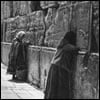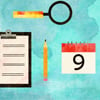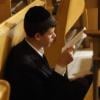When Shabbat ends this week, there will be no sweet-smelling spices or Kiddush wine to bid farewell to the sacred day. Instead, Jews around the world will don non-leather shoes, and make their way to synagogues and Chabad centers for evening services, followed by the mournful reading of Eichah (the book of Lamentations), the slim volume in which the prophet Jeremiah mourns the impending destruction of Jerusalem and the Holy Temple.
Tisha B’Av (the ninth day of the Hebrew month of Av) commemorates, among other things, the destruction of the First and Second Temples in Jerusalem, and the subsequent dispersion of the Jewish people throughout the world. It is observed this year after Shabbat on Aug. 10, and ends the following night. The day of mourning includes a 25-hour fast that lasts throughout the night and day.
Unique among the day’s observances is the ban on most Torah study since “the commands of G‑d ... gladden the heart.” To that end, many Chabad centers will be screening educational or inspirational films that focus on the struggles and triumphs of the Jewish people throughout the last 2,000 years of exile (many will be Holocaust-related). Others will be holding classes and study sessions on the “sad” parts of the Torah that may be studied, including Eichah, and portions of the Talmud and Midrash that tell of the destruction of Jerusalem and the hardships of exile.
In addition to the dim lighting in many synagogues, the atmosphere is further darkened by the fact that many people sit on upturned benches or crates since mourners are not to sit upright on chairs of ordinary height.
But within the despondency lies a kernel of joy. The Talmud teaches that the long-awaited messiah was born on the Ninth of Av. In the afternoon, when the mourning restrictions are somewhat lifted, many follow the custom of sweeping the floors in anticipation of his imminent arrival.
Once night falls, the mourners will recite evening prayers, wash their hands and troop outside to joyously say the Kiddush Levanah, recognizing the regrowth of the moon, traditionally seen as a symbol of the Jewish people.
And before the week is out, the full moon will figure prominently in the celebration of the 15th of Av (Tu B’Av). Among many other causes for celebration, this minor holiday (described in the Talmud as one of the happiest of the year) marks a complete rebound from the sadness of Tisha B’Av.
For Tisha B’Av services and programs near you, visit the Chabad center locator page here.
Articles and videos on Chabad.org for study before and on the day of Tisha B’Av can be found here.








Start a Discussion